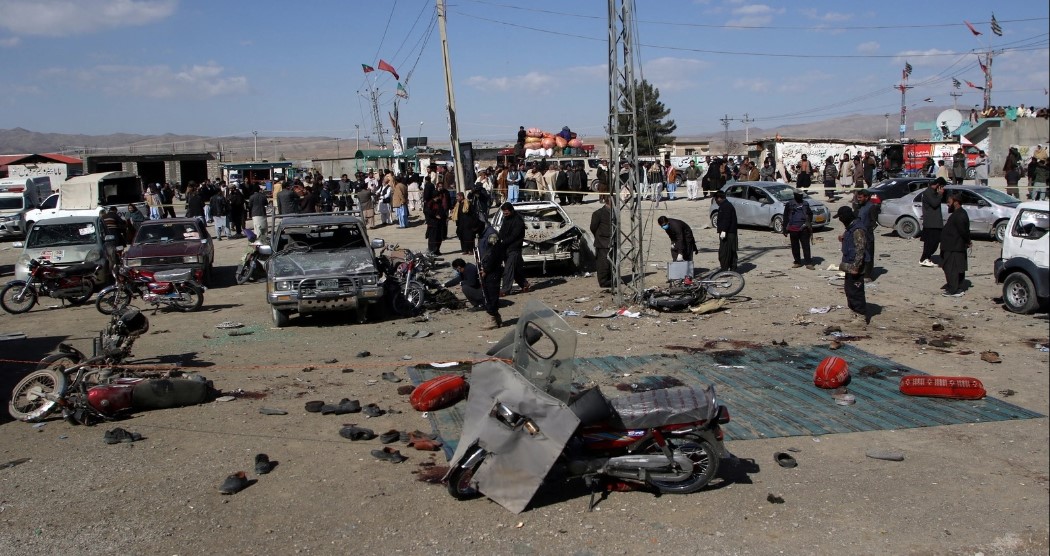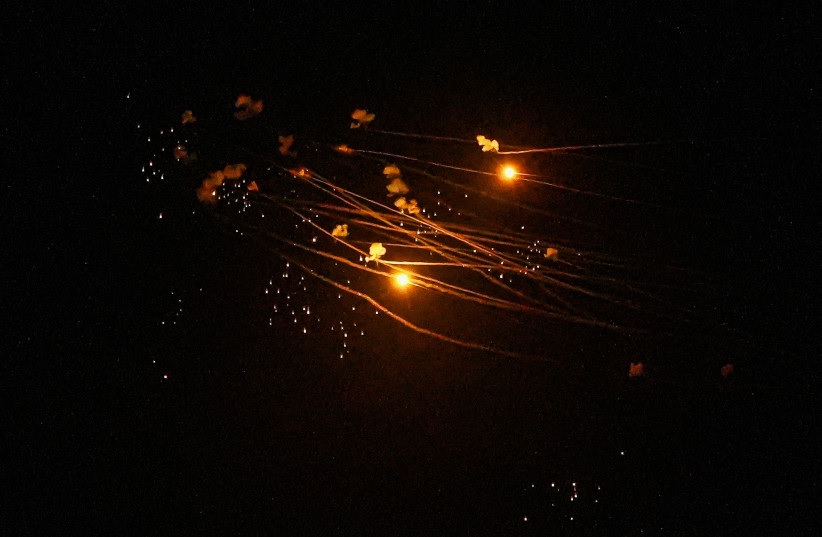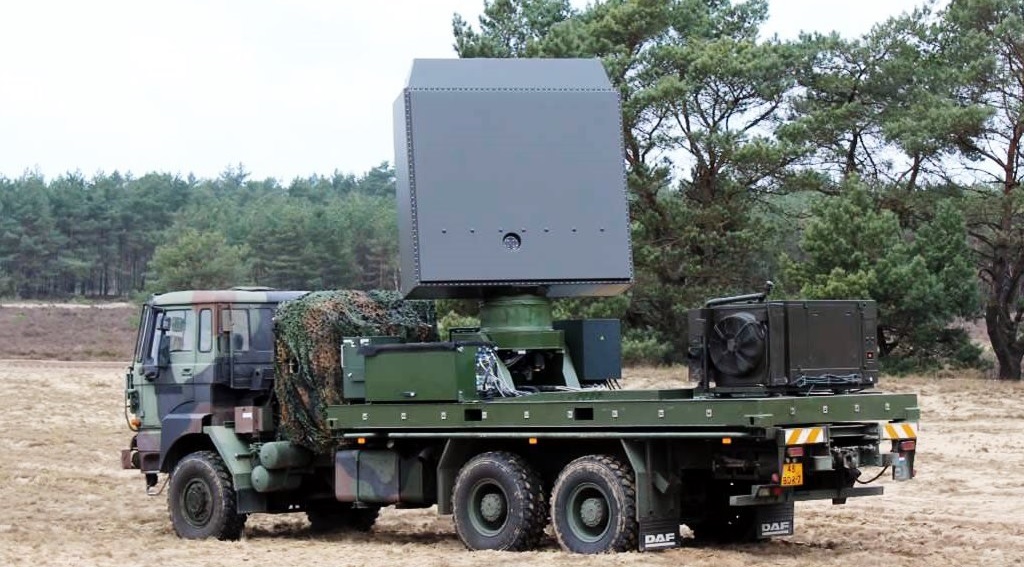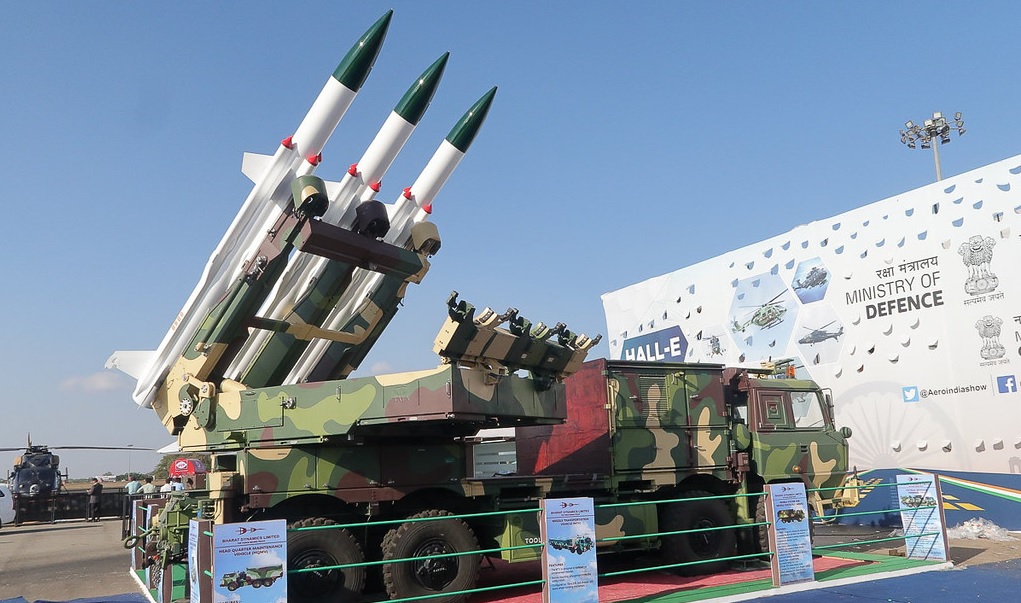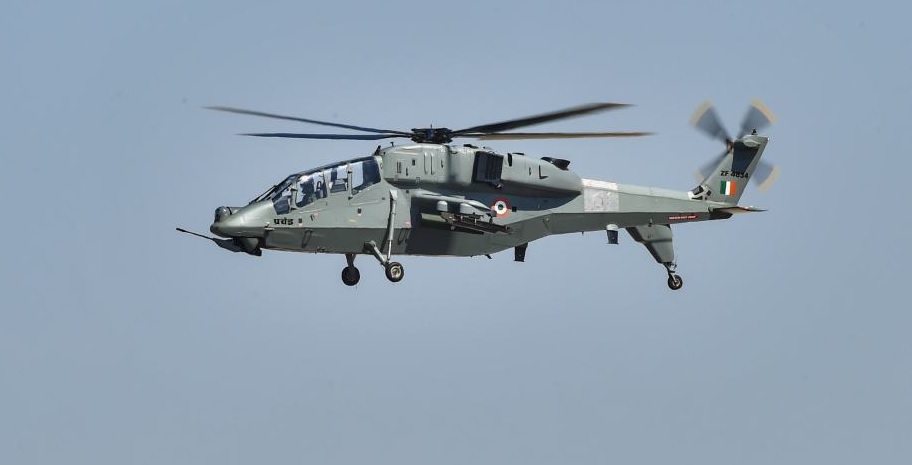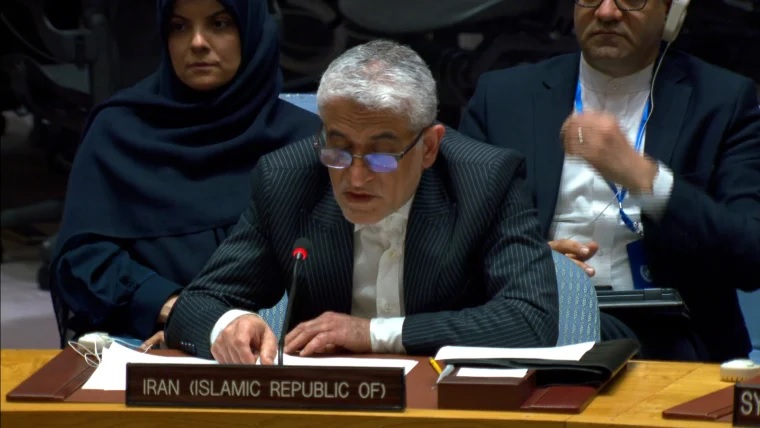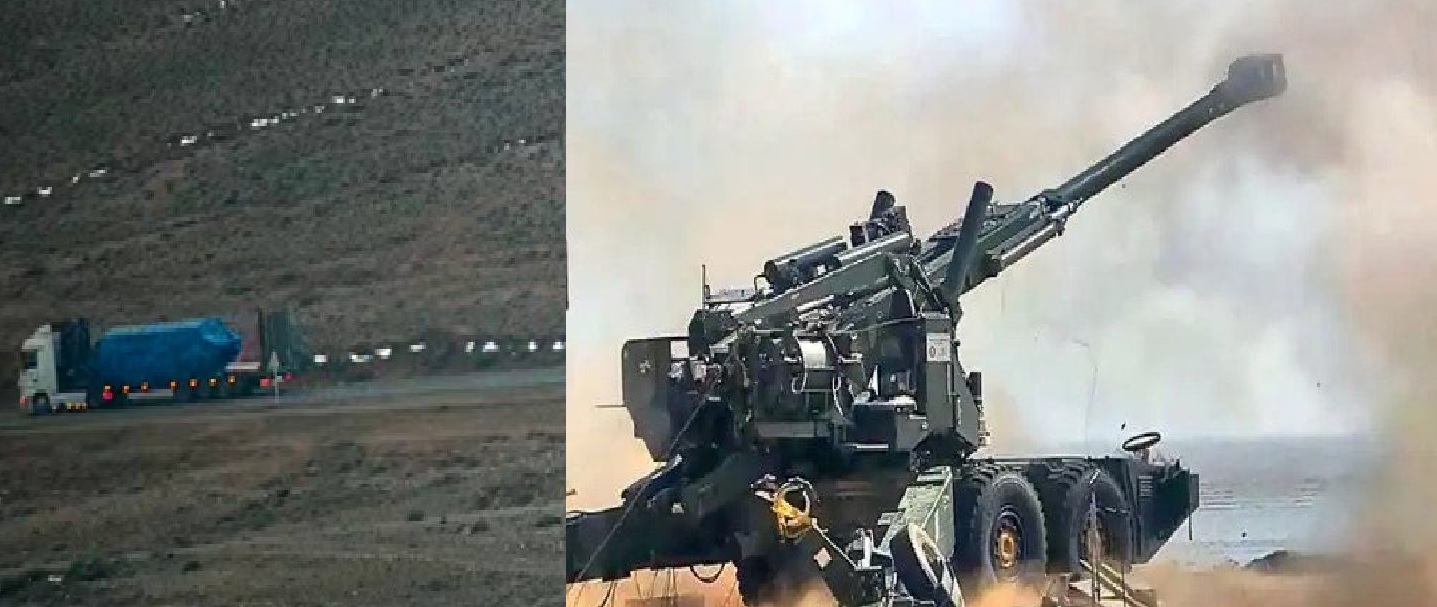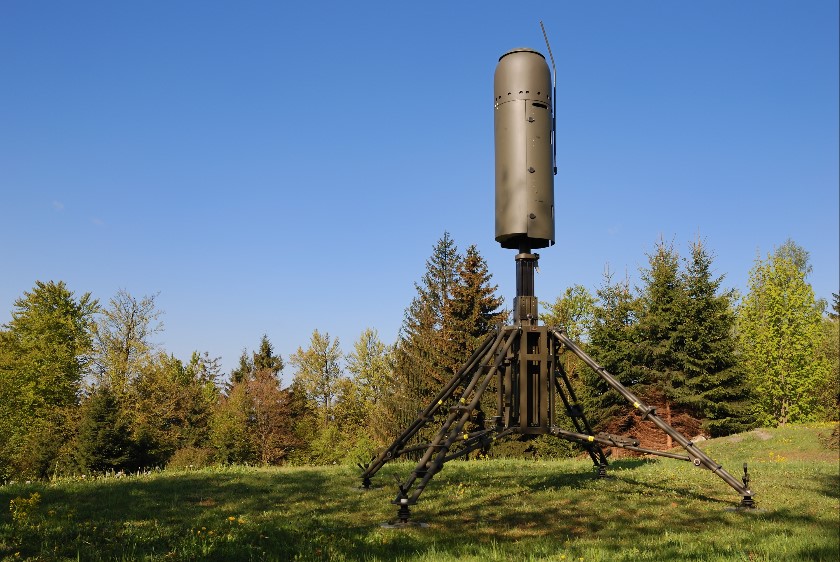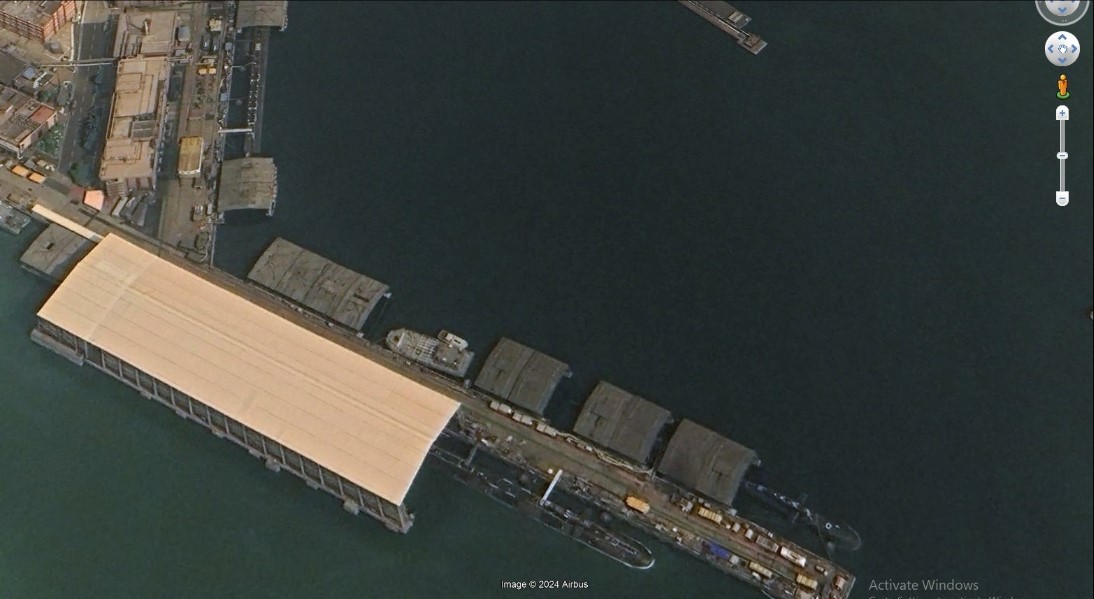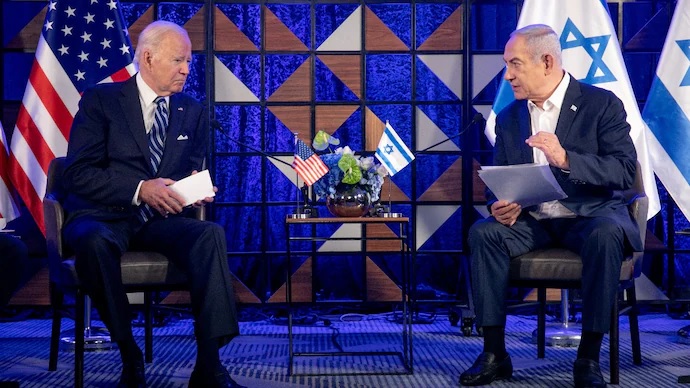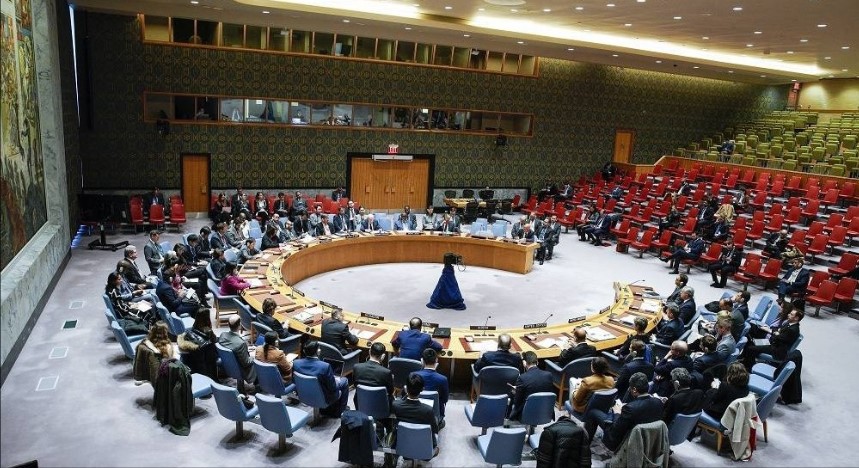India
Latest Defence News India ,Iran In recent diplomatic engagements, India's External Affairs Minister, S Jaishankar, engaged with his Iranian counterpart, Hossein Amir-Abdollahian, concerning the release of 17 Indian crew members from the ship MSC Aries, which was seized by Iran in the Strait of Hormuz. The conversation between the two leaders not only centered on the release of the crew but also addressed the importance of de-escalating tensions in the region.In a communication shared by Jaishankar on a social media platform, he emphasized the significance of diplomatic resolution and the imperative need to exercise restraint to prevent further escalation of the situation. Both ministers agreed to maintain communication on this matter.Furthermore, Kerala Chief Minister Pinarayi Vijayan expressed concerns about the safety of Indian nationals, including three crew members from Kerala, aboard the MSC Aries. In a letter to Jaishankar, he underscored the urgency of ensuring the safe repatriation of all Indian nationals, emphasizing the collective objective of their safe return without delay.The seizure of the Israel-linked cargo ship, MSC Aries, by Iran's Islamic Revolutionary Guard Corps Navy near the Strait of Hormuz has raised alarm. With 17 Indian nationals onboard, the incident has prompted swift diplomatic actions from Indian authorities. The ship's last known location was near the Strait of Hormuz, and it is currently navigating through the Persian Gulf, as reported by ship-tracking sources.Sources indicate ongoing diplomatic engagement between Indian and Iranian authorities to ensure the security, welfare, and early release of the Indian nationals onboard MSC Aries. The diplomatic channels, both in Tehran and Delhi, have been activated to address the situation promptly.The timing of the incident amidst heightened tensions between Iran and the West, exacerbated by the conflict between Israel and Hamas, adds complexity to the situation. Iran's direct attack on Israel, reportedly involving a barrage of attack drones and missiles, has further escalated tensions in the region.The international community closely monitors developments in the Strait of Hormuz, a strategically significant maritime passage through which a considerable portion of the world's oil supply is transported. Any disruption in this region could have far-reaching implications for global energy markets and maritime security.As diplomatic efforts continue to secure the release of the Indian crew members and navigate the broader geopolitical dynamics at play, ensuring the safety and well-being of the individuals involved remains paramount. The collective efforts of diplomatic channels, coupled with a commitment to dialogue and de-escalation, are essential to resolving the situation and maintaining stability in the region.In conclusion, the seizure of the MSC Aries and the subsequent diplomatic engagements underscore the complexities and sensitivities of maritime security in the Strait of Hormuz. The safety and welfare of the Indian crew members, alongside efforts to de-escalate tensions, are central to ongoing diplomatic efforts.
Read More → Posted on 2024-04-15 15:15:09World
Latest Defence News Pakistan Gunmen carried out a brutal attack in southwest Pakistan, resulting in the deaths of 11 individuals, according to officials. The incident occurred near Naushki city in Balochistan province, where suspected separatist militants targeted migrant laborers from Punjab, executing nine of them after checking their identification.Reports indicate that the assailants intercepted a bus on Friday evening, forcibly taking the workers from Punjab while sparing those accompanied by their families. The victims' bodies were later discovered about 2 kilometers away from the highway, having been subjected to point-blank gunfire.Following this, the same attackers targeted a vehicle belonging to a provincial parliamentarian, resulting in the deaths of two individuals when the car veered off the road.Law enforcement authorities have initiated a manhunt for the perpetrators, with indications pointing towards the involvement of Baloch separatists. Witnesses have recounted how the gunmen singled out Punjabi individuals, citing grievances against perceived injustices committed by Punjabis.Balochistan, despite its natural resource wealth, remains Pakistan's most impoverished province. The region has been plagued by a longstanding insurgency, with militants targeting not only security forces but also individuals from other ethnic backgrounds and foreign corporations operating in the area.Prime Minister Shehbaz Sharif has condemned the attack, labeling it as an act of terrorism and vowing to hold the facilitators accountable. This incident adds to a series of violent episodes in the region, including previous attacks on laborers and security forces.Baloch civil leaders have raised concerns about alleged state-sanctioned human rights abuses in the province, accusing authorities of perpetrating extrajudicial killings and enforced disappearances against dissenting voices.As authorities intensify efforts to apprehend the culprits behind this latest atrocity, the incident underscores the ongoing challenges posed by militancy and ethnic tensions in Balochistan, highlighting the need for a concerted approach to address the root causes of violence in the region.
Read More → Posted on 2024-04-15 15:04:24World
Latest Defence News U.S ,Iran ,Israel In response to escalating tensions between Israel and Iran, the US military has taken decisive action to intercept and destroy a significant number of unmanned aerial vehicles (UAVs) and ballistic missiles aimed at Israel from Iran and Yemen. According to reports from Al Jazeera, more than 80 one-way attack UAVs and at least six ballistic missiles were successfully neutralized by US Central Command (CENTCOM) forces, with support from US European Command destroyers.In an official statement released by CENTCOM, the ongoing provocative actions by Iran were highlighted as threats to regional stability and the safety of both US and coalition forces. The statement reaffirmed CENTCOM's commitment to supporting Israel's defense against such hostile actions and emphasized collaboration with regional partners to bolster security measures. The announcement comes in the wake of Iran's defense of its retaliatory attack on Israel, purportedly in response to an assault on its consulate in Syria. Despite the scale of the attack, involving over 300 drones and missiles, the damage incurred was relatively limited, largely due to the interception capabilities of Israel's Iron Dome missile defense system, as well as assistance from the US and its allies.US President Joe Biden commended the skill of US forces in assisting Israel and acknowledged the effectiveness of their defense mechanisms. He reiterated the unwavering support of the United States for Israel's right to self-defense, emphasizing the "ironclad" nature of their alliance. However, Biden cautioned against US involvement in any potential retaliatory measures taken by the Israeli government against Iran.John Kirby, the national security spokesman at the White House, lauded Israel's military and diplomatic prowess in thwarting the attack, citing the country's strategic partnerships as instrumental in their success. Defense Secretary Lloyd Austin reaffirmed US commitment to safeguarding troops and partners in the region, while also providing additional support for Israel's defense efforts.The heightened tensions between Israel and Iran have prompted concerns of a broader conflict, prompting calls for restraint from neighboring states and global powers. Following Iran's missile strikes, Israeli War Cabinet Minister Benny Gantz asserted Israel's determination to hold Iran accountable for its actions, indicating readiness to respond at an opportune time.Gantz emphasized the international solidarity with Israel in the face of perceived threats, underscoring the ongoing need to build a regional coalition to address the challenge posed by Iran. He emphasized the importance of extracting a suitable response from Iran in alignment with Israel's interests and timeframe.As the situation continues to evolve, stakeholders are closely monitoring developments and advocating for diplomatic solutions to de-escalate tensions and promote stability in the region.
Read More → Posted on 2024-04-15 14:59:50World
Latest Defence NewsNetherlandThe Dutch Ministry of Defence has solidified its air surveillance capabilities with the acquisition of seven additional Ground Master 200 Multi-Mission Compact radars (GM200 MM/C) from Thales, a prominent French defence company. This procurement, facilitated by the Command Materiel and IT (COMMIT) of the Dutch military, builds upon a previous purchase of nine systems in 2019, showcasing the ongoing collaboration between Thales and the Dutch Armed Forces.The GM200 MM/C radar system is a cutting-edge solution designed to address the complexities of modern warfare. It excels in detecting, tracking, and classifying various targets such as UAVs, missiles, and aircraft swiftly and effectively. Equipped with 4D Active Electronically Scanned Array (AESA) technology and unique dual-axis multi-beam capabilities, this radar provides unparalleled surveillance flexibility, essential for safeguarding military assets and personnel.Jarno Ursum, project manager at COMMIT, expressed confidence in the radar's capabilities and emphasized the strategic partnership with Thales. "With this additional procurement, we continue the strong cooperation with Thales that has been the basis for the development of this radar," Ursum stated.The Ground Master 200 Multi-Mission family, comprising both the compact GM200 MM/C and the all-in-one GM200 MM/A, represents the forefront of radar technology. These systems are highly mobile and can be rapidly deployed, characteristics crucial for modern military operations requiring swift response and adaptability.Gerben Edelijn, CEO of Thales Netherlands, underscored the importance of this ongoing partnership. "We greatly appreciate the Royal Dutch Armed Forces' confirmation of their trust in the GM200 MM/C by acquiring seven more systems, with two in option. Thales is proud to support the safety and security of military personnel and to contribute to the air sovereignty of European NATO nations," Edelijn said.The GM200 MM/C radars are mounted on the Scania Gryphus truck, enhancing their tactical mobility. This setup allows the radars to be operational within a minute of arriving at a location, a critical feature in modern warfare where speed and flexibility are paramount.
Read More → Posted on 2024-04-15 14:54:21India
Latest Defence NewsIndiaIn a recent address at an election rally, Defence Minister Rajnath Singh highlighted India's assertive stance under the leadership of Prime Minister Narendra Modi, particularly in response to the Uri and Pulwama terror attacks. Singh emphasized India's historically non-aggressive stance, noting that the country has refrained from initiating conflicts or annexing foreign territories.However, in the aftermath of the Uri attack in September 2016, where 19 soldiers lost their lives, and the Pulwama attack in February 2019, which resulted in the deaths of over 40 CRPF personnel, India demonstrated a decisive response. Following the Uri attack, the Indian Army executed a surgical strike across the border, targeting terrorist launch pads. Similarly, after the Pulwama attack, the Indian Air Force conducted airstrikes on a terrorist camp in Balakote, Pakistan.Singh underscored that these actions sent a clear message to adversaries: while India harbors no aggressive intentions, it possesses the capability and resolve to retaliate when provoked. He credited Prime Minister Modi's leadership for enhancing India's stature globally, particularly in the aftermath of the surgical strikes.Singh also highlighted India's proactive approach in ensuring the safety of its citizens abroad. He cited the evacuation of over 22,500 Indian students from Ukraine during the conflict with Russia in early 2022 as an example. Singh attributed the success of the evacuation mission to Prime Minister Modi's diplomatic efforts, which resulted in a temporary cessation of hostilities between Ukraine and Russia, allowing for the safe return of Indian nationals.Turning to domestic achievements, Singh lauded the government's track record of implementing welfare schemes benefiting millions of citizens over the past decade. He specifically mentioned the successful rollout of free COVID-19 vaccination for all citizens, attributing its success to strong leadership.In a brief interaction with reporters, Singh expressed confidence in the Bharatiya Janata Party's prospects in the upcoming Lok Sabha elections in Jammu and Kashmir. However, he declined to comment on the ongoing legal proceedings involving Delhi Chief Minister Arvind Kejriwal, stating that the matter is sub-judice.Overall, Singh's remarks underscored India's firm stance in defending its interests, both domestically and internationally, under Prime Minister Modi's leadership.
Read More → Posted on 2024-04-15 14:35:28India
Latest Defence News India ,Egypt In a bid to modernize its air defense capabilities, Egypt is actively considering the acquisition of India's Akash medium-range surface-to-air missile system. This move not only signifies a potential boost to India's defense exports but also strengthens the strategic partnership between the two nations.The Indian Embassy in Cairo is leading efforts to promote Indian-made defense equipment, particularly the Akash system, with discussions underway regarding a possible sale and joint production of Akash missiles in Egypt. Egypt currently relies on aging Soviet-era air defense systems like the MIM-23 Hawk, 2K12 Kub (SA-6), Tayer el-Sabah (SA-2), and S-125 Pechora-M (SA-3), prompting the interest in the modern and effective Akash system.Developed by India's Defence Research and Development Organisation (DRDO), the Akash system is capable of countering threats from fighter jets, cruise missiles, and ballistic missiles at a range of up to 30 km. Its successful deployment by India's armed forces and previous export to Armenia serve as testaments to its efficacy.India and Egypt have a longstanding defense relationship, marked by military sales, training programs, and joint military exercises. The interest in the Akash system builds on previous discussions during Egyptian President Abdel Fattah El-Sisi's visit to New Delhi in January 2023 and a memorandum of understanding signed by the defense ministers of both countries in September 2022 to strengthen bilateral defense cooperation.India's aggressive promotion of its indigenous military technology has resulted in record defense exports, with the Akash system attracting interest from other nations like Vietnam, Bangladesh, and Sri Lanka. With aims to increase defense exports to $5 billion by 2025, India is actively targeting markets in Africa, offering affordable and reliable alternatives to Western-made equipment.In addition to the Akash system, Egypt may also explore other Indian-made defense products like the Akash NG (New Generation) system and the Smart Anti-Airfield Weapon (SAAW), alongside considering the MBDA CAMM air defense system to further bolster its modernization efforts.The potential acquisition of the Akash missile system by Egypt underscores the deepening defense relationship between the two nations and highlights India's emergence as a significant player in the global arms market, providing competitive and capable defense solutions.
Read More → Posted on 2024-04-15 04:23:09World
Latest Defence News Israel ,Iran The ongoing conflict between Israel and Iran has manifested through a series of strategic maneuvers and retaliatory strikes across the Middle East. Over the years, both nations have engaged in a shadow war, employing various means such as airstrikes, targeted assassinations, and proxy attacks to assert dominance and safeguard their interests in the region.In a significant escalation, Iran recently launched a barrage of drones and missiles directly at Israel from its own territory. This marked a departure from its previous tactics of relying on proxy forces like Hezbollah in Lebanon to target Israeli interests. The attack, although largely intercepted or neutralized, underscored a pivotal moment in the conflict, according to Ahron Bregman, a political scientist specializing in Middle East security issues.The historical backdrop of the conflict reveals a pattern of tit-for-tat actions. For instance, in August 2019, Israel conducted airstrikes targeting Iranian-trained militants in Syria, detonated a drone near a Hezbollah office in Lebanon, and eliminated a commander of an Iran-backed Iraqi militia in Iraq. These actions were interpreted as preemptive measures aimed at thwarting Iran's attempts to establish strategic supply routes to Lebanon through Iraq and Syria.The conflict intensified in January 2020 with the assassination of Gen. Qassem Soleimani, the commander of Iran's foreign-facing Revolutionary Guard, by a U.S. drone strike in Baghdad. Iran retaliated by launching missiles at bases housing American troops in Iraq, resulting in casualties among U.S. military personnel.Subsequent events, such as the attack on an Israeli-owned oil tanker off the coast of Oman in July 2021, allegedly carried out by Iranian drones, and the targeted killings of Iranian nuclear scientists and military commanders by Israel, further exacerbated tensions.The conflict spilled over into neighboring territories, with Iranian-backed militias escalating attacks in response to Israeli actions. Notable instances include Israel's bombardment of Gaza in December 2023 and the subsequent increase in attacks by Iranian-backed groups. This cycle of retaliation culminated in the assassination of a high-ranking military figure, Seyed Razi Mousavi, in Syria, with Iran accusing Israel of orchestrating the attack.The conflict also witnessed collateral damage, as demonstrated by the explosion in Beirut that claimed the lives of a senior Hamas leader and two commanders in January 2024. Hezbollah, a major recipient of Iranian support, intensified its assaults on Israel following the incident, prompting retaliatory strikes by the Israeli military.Recent escalations, including Israeli drone strikes targeting Hezbollah operatives in Lebanon and airstrikes in Syria resulting in casualties among Syrian soldiers and Hezbollah fighters, highlight the volatile nature of the conflict. Despite Israel's reluctance to claim responsibility for these actions, its defense minister expressed a commitment to intensifying pressure on Hezbollah and expanding military operations against the group.The conflict reached a new threshold when strikes on an Iranian Embassy building in Damascus claimed the lives of several top Iranian commanders, an incident attributed to Israel by Iran. These developments underscore the complex dynamics and enduring hostilities between Israel and Iran, which continue to shape the geopolitical landscape of the Middle East.
Read More → Posted on 2024-04-15 04:18:35India
Latest Defence News India Indian Air Force (IAF) helicopter crews deployed in counter-terrorist and internal security operations will soon benefit from new, lighter bulletproof jackets. The IAF has initiated the process of procuring jackets that offer enhanced comfort and protection for aircrew members engaged in high-risk environments.Currently, the existing bulletproof jackets worn by aircrew weigh approximately 6.5 kg and are deemed bulky and uncomfortable for wear during flight. Moreover, aircrew members are required to don additional tactical vests to carry ammunition and survival gear, adding to the weight and discomfort.In response to these challenges, the IAF has sought industry collaboration to develop lighter bulletproof jackets weighing no more than 4 kg during flight and 8 kg during combat survival. These jackets are required to provide Level 3+ ballistic protection, capable of withstanding small arms fire, including bullets from 7.62 mm rifles such as the AK-47, at close ranges.The new jacket design comprises two components: an inner jacket for use during flight, offering front and side protection, and an outer shell for combat survival, featuring storage pockets and all-round torso protection. This modular approach ensures adaptability and ease of use in different operational scenarios.Importantly, the jackets must not impede aircrew mobility during flight or combat survival and should be flame retardant to mitigate additional risks. Additionally, the design must be suitable for Indian climatic conditions, ensuring optimal performance in various environments.Given the frequent deployment of IAF helicopters in anti-terrorist and internal security operations, the procurement of these advanced bulletproof jackets underscores the commitment to safeguarding the well-being of aircrew members. By leveraging innovative design and technology, the IAF aims to enhance operational effectiveness and ensure the safety of personnel in challenging operational environments.
Read More → Posted on 2024-04-15 04:15:27World
Latest Defence News Iran ,Israel In a recent statement to the United Nations Security Council, Iran's envoy emphasized the nation's exercise of its inherent right to self-defense in response to what it perceives as an attack on its consulate in Damascus by Israel. Amir Saeid Iravani, Iran's representative, criticized the Security Council for what he deemed a failure to uphold international peace and security in the aftermath of the incident.Iravani asserted that Tehran had no alternative but to retaliate in light of the perceived threat to its diplomatic mission. He emphasized Iran's stance of not seeking escalation or war, but underscored the country's readiness to respond to any perceived threat or act of aggression.The envoy's remarks reflect Iran's position on recent events and its determination to safeguard its interests and security within the region. The statement, delivered with a tone of diplomatic assertiveness, highlights the ongoing tensions between Iran and Israel, as well as Iran's commitment to defending its sovereignty and diplomatic missions.
Read More → Posted on 2024-04-15 04:12:08India
Latest Defence News India Pakistan Amir Sarfaraz Tamba, a key figure accused in the murder of Indian national Sarabjit Singh in Pakistan, was fatally shot by unidentified gunmen in Lahore today. Official sources confirm that Tamba, known to be associated with the Lashkar-e-Taiba (LeT) terror outfit founder Hafiz Saeed, succumbed to his injuries after being attacked by assailants on motorcycles in Lahore's Islampura area.The incident harks back to the tragic demise of Sarabjit Singh in 2013, who passed away in Lahore's Jinnah Hospital due to a heart attack. Singh had been in a coma for nearly a week following a brutal assault by fellow inmates, including Tamba, within Lahore's high-security Kot Lakhpat jail.Born in Lahore in 1979, Tamba's close affiliation with Hafiz Saeed's LeT has been a matter of concern. He was reportedly involved in several bombings in Pakistan's Punjab province in 1990, for which he received the death penalty.The attack on Sarabjit Singh, orchestrated by a group of Pakistani prisoners wielding bricks and iron rods, shed light on the vulnerability of inmates within the prison system. Singh's case stirred diplomatic tensions between India and Pakistan, with India vehemently advocating for justice.Tamba's demise comes as a significant development in the ongoing saga surrounding Sarabjit Singh's murder case, albeit raising questions about the safety and security of prisoners within Pakistan's correctional facilities.Authorities are expected to launch a thorough investigation into Tamba's assassination to apprehend the perpetrators and shed light on the circumstances surrounding his demise.
Read More → Posted on 2024-04-15 04:07:56India
Latest Defence News Armenia , Iran ,India ,Russia In recent discourse, there have been indications suggesting Iran's involvement in obstructing the shipment of Indian howitzers to Armenia, with speculation emerging about Russia's potential influence in this matter. Gayane Abrahamyan, a former lawmaker, has raised concerns regarding Russia's pressure on Iran to impede the delivery. While these claims have garnered attention from various quarters, they remain unverified.Iran's ambassador to Armenia, Mehdi Sobhani, refrained from offering a direct statement when questioned about the issue in February 2024. Instead, Sobhani emphasized Iran's commitment to supporting Armenia's military strength while underscoring the importance of regional stability. However, his comments did not directly address the reported obstruction of the Indian shipment, leaving room for interpretation.Analyst Tatul Hakobyan added complexity to the situation by asserting that a Russian company initially agreed to supply Pinaka launch vehicles, possibly part of the Indian shipment, but later withdrew. Allegations suggest that Iran subsequently stepped in. Despite these intricate circumstances, reports indicate India's determination to fulfill its arms agreement with Armenia, with ongoing deliveries being observed.Against this backdrop, Armenia's military modernization efforts come into focus, particularly in its artillery divisions. The 2020 Nagorno-Karabakh conflict highlighted the vulnerability of Armenia's aging Soviet-era artillery, with estimates suggesting significant losses. To address this, Armenia plans to replace outdated assets partially with Indian-made howitzers, notably the Advanced Towed Artillery Gun System (ATAGS) and the Multi-terrain Artillery Gun (MArG) 155mm / 39 cal – BR.Traditionally reliant on Soviet and Russian-made artillery, Armenia's shift towards modernization reflects a strategic necessity. The ATAGS, developed by India's Defence Research and Development Organisation (DRDO), offers advanced capabilities suitable for contemporary warfare scenarios. Its automated features, advanced targeting systems, and extended firing range make it a valuable addition to Armenia's arsenal.Similarly, the MArG, designed for swift deployment in challenging terrains, holds significance for Armenia's mountainous landscapes. Its mobility, coupled with advanced fire control systems, enhances Armenia's capabilities in mountain warfare scenarios. Armenia's investment in these Indian-made artillery systems signifies a leap in its military modernization efforts, promising enhanced firepower and maneuverability.In conclusion, the reported obstruction of the Indian howitzers shipment to Armenia, allegedly involving Iran under potential Russian influence, underscores the geopolitical complexities surrounding Armenia's military modernization. Despite these challenges, Armenia's adoption of advanced Indian artillery systems signals a strategic shift towards bolstering its defense capabilities, aligning with its evolving security needs.
Read More → Posted on 2024-04-14 16:21:49World
Latest Defence News Czech The Czech Armed Forces are set to usher in a new era of surveillance with the introduction of the Deployable Passive ESM Tracker (DPET). This state-of-the-art system, developed to meet the specific requirements of the Czech military, represents a significant advancement over its predecessor, the VERA S/M, which has served since 1996.Built upon decades of research and development, the DPET is the deployable version of the latest generation VERA-NG system. It will be operated by the soldiers of the 532nd Electronic Warfare Battalion, a part of the 53rd Reconnaissance and Electronic Warfare Regiment.Passive surveillance systems have long been integral to the Czech Army's operations, with a lineage dating back to the 1960s and renowned predecessors such as Ramona and Tamara. The DPET, also known as Deployable Passive Electronic Support Measures Tracker in NATO terminology, builds upon this legacy with cutting-edge technology.At its core, the VERA-NG system is renowned for its versatility, capable of addressing various operational needs simultaneously. It excels in Air Surveillance, Ground Based Air Defense (GBAD), and Electronic Warfare domains. Utilizing the multilateration Time Difference of Arrival (TDOA) principle, the system can detect, localize, track, and identify air, ground, and naval targets, as well as analyze pulse and continuous wave signals—all without emitting any electromagnetic energy, rendering it undetectable to adversaries.The battle-proven use cases of VERA-NG encompass Air Surveillance, where it complements traditional active radar networks, GBAD, where it enhances real-time detection and identification of airborne threats, and Electronic Warfare, where its precision surpasses traditional ground-based ELINT/ESM systems.The DPET system comprises a central receiving and processing station, three side receiving stations, and an operator's workplace. Antennas are mounted on collapsible masts within ISO-1C containers, ensuring mobility and ease of deployment. Transported on customized trucks, the system forms an integral part of the military's delivery infrastructure.The introduction of DPET represents a significant enhancement in the Czech Armed Forces' surveillance capabilities. Its ability to provide early warning and detailed target identification can prove decisive in military operations, facilitating faster decision-making and ultimately contributing to mission success.In conclusion, the deployment of DPET underscores the Czech Armed Forces' commitment to leveraging cutting-edge technology to maintain a strategic advantage on the battlefield. With its advanced capabilities and proven track record, DPET stands poised to play a pivotal role in safeguarding national security and ensuring operational effectiveness in diverse operational environments.
Read More → Posted on 2024-04-14 16:06:24Space & Technology
Latest Space News World Exploring low-gravity environments, such as asteroids and moons, poses unique challenges for space exploration. To address these challenges, researchers at ETH Zurich university in Switzerland have developed SpaceHopper, a three-legged robot designed to navigate these celestial bodies.The SpaceHopper program originated as a student research project two and a half years ago and has since evolved into a promising solution for exploring small celestial bodies with minimal gravity. The robot features a triangular body with an articulated leg at each corner, equipped with knee and hip joints for propulsion and control.During a recent test conducted in a simulated zero-gravity environment aboard a European Space Agency parabolic flight, SpaceHopper demonstrated its capabilities. The robot executed coordinated movements, utilizing its legs to propel itself through space and control its landing within a designated area. These brief hops enable SpaceHopper to overcome the challenges of limited traction and atmospheric conditions typically encountered in low-gravity environments.The significance of SpaceHopper lies in its potential to unlock valuable mineral resources and provide insights into the formation of the universe. Asteroids, in particular, are believed to harbor resources that could benefit future space missions and human endeavors. By enabling efficient exploration of these celestial bodies, SpaceHopper contributes to advancing our understanding of the cosmos.The recent successful test during the parabolic flight marks a significant milestone in the development of SpaceHopper. The ability to simulate low-gravity conditions provides researchers with valuable data to further refine and optimize the robot's performance for future missions.In conclusion, SpaceHopper represents a promising advancement in the field of space exploration. Its innovative design and functionality offer a practical solution for navigating low-gravity environments and conducting scientific research on celestial bodies. As efforts continue to expand our reach into space, SpaceHopper stands poised to play a crucial role in shaping the future of extraterrestrial exploration.
Read More → Posted on 2024-04-14 16:00:50World
Latest Defence News North Korea ,China North Korean leader Kim Jong Un reaffirmed his commitment to fostering strong ties with China during a meeting with China's top legislator, Zhao Leji. The meeting, which took place on Saturday in Pyongyang, was characterized by Kim as significant for demonstrating the enduring friendship between the two nations. Kim expressed the North's steadfast policy of nurturing this friendship and emphasized the importance of further developing their cooperative relations in line with the current circumstances.During their discussions, both sides explored opportunities to enhance cooperation across various sectors to reinforce their friendly and cooperative ties. Kim highlighted the North's unwavering commitment to strengthening the friendship between the two countries and expressed optimism about the positive outcomes that would result from this effort.In addition, Kim proposed a toast to the continued progress of socialism in both nations and extended well wishes to Chinese President Xi Jinping. The meeting was attended by key officials, including representatives from the ruling Workers' Party of Korea and North Korea's Ministry of Foreign Affairs.After their deliberations, Kim personally saw off Zhao and his delegation as they departed from the meeting. Zhao's visit, as the chairman of the Standing Committee of the National People's Congress of China, marks the first high-ranking Chinese official visit to North Korea since the onset of the COVID-19 pandemic in early 2020.The visit coincided with the 75th anniversary of the establishment of diplomatic relations between North Korea and China, underscoring the significance of the occasion. This meeting reaffirms the enduring friendship between the two countries and signals their commitment to further strengthening their bilateral ties in the future.
Read More → Posted on 2024-04-14 15:46:47India
Latest Defence News India India's pursuit of a robust sea-based nuclear deterrent has taken another step forward with the launch of the S4 submarine, the third vessel in the Arihant-class SSBN series. The recent satellite imagery revealing S4 in an advanced stage of construction underscores India's commitment to bolstering its strategic capabilities.Analysts examining the images have noted significant upgrades in S4 compared to its predecessors, S2 and S3. These advancements, coupled with the planned total of four Arihant-class submarines, solidify India's position in the realm of sea-based deterrence. The country's strategic vision is further underscored by the substantial investments in command and control systems, encompassing long-range communication infrastructure, fortified bases, and requisite support vessels.The launch of S4, which occurred quietly in Visakhapatnam toward the end of November 2022, marks a milestone in India's pursuit of a nuclear triad. While official confirmation regarding its armament remains pending, sources within the navy and Ship Building Centre in Visakhapatnam suggest that S4 may be configured to accommodate either 24 K-15 missiles with a range of 1,000 km or 8 K-4 missiles with a range of 3,500 km.Responsibility for the construction, commissioning, and testing of SSBNs rests squarely with the Strategic Forces Command (SFC) or the Strategic Nuclear Command (SNC), overseen by the Prime Minister's Office (PMO). While the launch of S4 is a significant milestone, it's crucial to recognize that it marks only the initial step in a lengthy process that includes sea trials, weapon testing, and eventual commissioning.The genesis of India's SSBN program dates back to the launch of INS Arihant (S2) in 2009, signifying a concerted effort to enhance national security capabilities. As S4 joins its predecessors in the fleet, India moves closer to achieving a formidable nuclear triad, aligning with established nuclear warfare doctrine.In conclusion, the launch of S4 underscores India's steadfast commitment to bolstering its strategic deterrent capabilities through the development of advanced SSBNs. As the country progresses towards completing its fleet of Arihant-class submarines, it solidifies its position as a key player in the realm of maritime security and nuclear deterrence.
Read More → Posted on 2024-04-14 15:38:52India
Latest Defence News India Elon Musk's Starlink, a satellite-based internet service, is on the brink of entering the Indian market following a thorough government review. Despite apprehensions regarding the company's potential affiliations with the US government, India seems inclined to grant "conditional approval" to Starlink, prioritizing its capacity to extend internet access to remote areas.The forthcoming approval precedes Musk's anticipated visit to India, during which he is slated to meet with Prime Minister Narendra Modi. The visit may encompass discussions regarding further investments in India, including the prospective establishment of a Tesla factory. This underscores the burgeoning business relations between Musk's enterprises and India's rapidly expanding market.Starlink's technology operates by leveraging an extensive network of satellites to deliver high-speed internet, even in regions devoid of traditional cable or fiber infrastructure. This has the potential to transform connectivity in rural and underserved parts of India.India's "conditional approval" signifies a cautious approach. The government likely aims to strike a balance between the advantages of this innovative technology and addressing any potential national security concerns that may arise.
Read More → Posted on 2024-04-14 15:33:05World
Latest Defence News Israel ,U.S In recent diplomatic communications between President Joe Biden and Israeli Prime Minister Benjamin Netanyahu, the United States affirmed its stance regarding potential Israeli actions against Iran. Reports from reputable sources such as CNN and the Wall Street Journal indicate that President Biden conveyed to Prime Minister Netanyahu that the U.S. would not partake in any Israeli counter-offensive targeting Iran.The context for this conversation stems from a series of events, including a suspected Israeli attack on Iran's consulate in Syria on April 1, which reportedly prompted Iran to retaliate by launching numerous drones and missiles towards Israel on Saturday night.During their discussion, President Biden advised Prime Minister Netanyahu against further escalation, suggesting that additional responses were unnecessary. Moreover, senior U.S. officials reportedly communicated to their Israeli counterparts that the United States would refrain from participating in any offensive actions against Iran.John Kirby, a prominent figure within the White House's national security team, reiterated the United States' commitment to assisting Israel in its defense efforts. However, Kirby emphasized that the U.S. government's overarching objective is to avoid heightened tensions and the prospect of a broader conflict in the region.In light of these developments, it is apparent that the Biden administration is prioritizing diplomatic solutions and de-escalation measures over military engagement with Iran. The stance reflects a strategic approach aimed at maintaining stability in the Middle East while ensuring the security of U.S. allies, particularly Israel.Moving forward, the Biden administration is likely to continue engaging with regional stakeholders to address underlying tensions and promote dialogue as a means of resolving conflicts peacefully. This approach underscores the importance of diplomacy in navigating complex geopolitical challenges and fostering stability in the international arena.
Read More → Posted on 2024-04-14 15:04:16World
Latest Defence News Israel ,UN Israel has called upon the United Nations Security Council to swiftly convene a meeting to condemn Iran's recent drone strikes on its territory and designate the Islamic Revolutionary Guard Corps (IRGC) as a terrorist organization. In a letter addressed to the president of the UN Security Council, Israel's permanent representative, Gilad Erdan, expressed deep concern over Iran's actions, which he deemed as grave violations of international law and a direct threat to global peace and security.The Israeli representative emphasized the severity of the situation, citing Iran's launch of more than 200 unmanned aerial vehicles (UAVs), cruise missiles, and ballistic missiles towards Israel. These attacks, according to Israel, constitute clear violations of the UN Charter and international law. Erdan condemned Iran's prideful acknowledgment of the assault, labeling it as a dangerous escalation that cannot be overlooked.Moreover, Israel underscored Iran's consistent disregard for its international obligations, pointing to the country's ongoing support for militant groups such as Hamas, Hezbollah, and the Houthis. Israel highlighted Iran's role in destabilizing the region through its proxies and expressed concern over the acceleration of weapons transfers to Hezbollah, in violation of Security Council resolutions.The letter also referenced Iran's recent seizure of a Portuguese civilian cargo ship by the IRGC, further illustrating Iran's provocative behavior and disregard for maritime law. Israel reiterated the gravity of the situation, emphasizing that Iran's actions pose a direct threat to international peace and security.In response to the attacks, the United Kingdom deployed additional Royal Air Force jets and air refueling tankers to the region to bolster its defense capabilities. Israel's Defense Forces reported successfully intercepting the majority of the strikes launched by Iran and affirmed their readiness to defend the country against any further threats.The Israeli government's call for action underscores the urgency of addressing Iran's aggressive behavior on the international stage. With tensions escalating in the region, Israel seeks a decisive response from the UN Security Council to deter future acts of aggression and uphold the principles of international law and security.
Read More → Posted on 2024-04-14 14:56:31World
Latest Defence NewsEuropeHoneywell and ITP Aero have recently announced their collaboration to establish a new authorized service center for Honeywell’s F124-GA-200 aircraft engines. The center, located in Madrid at ITP Aero’s Ajalvir site, will serve as a licensed maintenance, repair, and overhaul (MRO) facility for the International Turbine Engine Company (ITEC), a joint venture between Honeywell Aerospace Technologies and the Aerospace Industrial Development Corporation (AIDC).The initiative aims to support Honeywell's commitment to the future of aviation by providing advanced technological support to enhance efficiencies and promote sustainable operations. This venture marks the first European center for Honeywell’s F124-GA-200 engine, slated to commence operations by the end of 2024. The facility will cater to the repair needs of over 150 engines in the region, offering operators quicker turnaround times for repairs by conducting maintenance locally.The establishment of this service center underscores Honeywell’s dedication to meeting customer needs and enhancing support infrastructure. It complements existing regional service centers in North America and the Asia Pacific region, reinforcing Honeywell’s global presence in engine support.John Head, vice president and general manager of Engines at Honeywell Aerospace Technologies, emphasized the significance of the F124-GA-200 engines, highlighting their modular design, maintenance ease, and impressive power-to-weight ratio. He expressed Honeywell’s commitment to customer satisfaction and the company's pleasure in providing improved service through the new center.Álvaro Santodomingo, Executive Director of ITP Aero’s Defence business unit, echoed Head’s sentiments, emphasizing the milestone in the longstanding partnership between Honeywell and ITP Aero. He underscored the strategic importance of the collaboration in expanding MRO capabilities and service offerings, aligning with market demands and customer requirements.Overall, the establishment of the new service center represents a strategic move by Honeywell and ITP Aero to enhance support infrastructure, streamline operations, and meet the evolving needs of the aviation industry.
Read More → Posted on 2024-04-14 14:50:30India
Latest Defence News India ,Israel ,Iran India has expressed serious concern over the recent escalation of hostilities between Iran and Israel, emphasizing the potential threat posed to peace and security in the region. Following Iran's drone and missile attacks on Israel, the Ministry of External Affairs (MEA) issued a press release urging for immediate de-escalation and a return to diplomatic negotiations. In the press release, the MEA underscored the importance of all parties exercising restraint and refraining from violence. India called for a resumption of dialogue to defuse the escalating tensions. The MEA emphasized the need to closely monitor the situation and maintain security and stability in the region.As tensions rise, Israeli Prime Minister Benjamin Netanyahu convened a meeting of his war cabinet in Tel Aviv to address the situation. Iran's response to the embassy strike, which resulted in the deaths of three top military generals, has further heightened tensions.In response to the escalating conflict, US President Joe Biden held talks with Israeli Prime Minister Netanyahu after meetings with the Security Cabinet and the War Cabinet. The international community is closely watching the situation unfold and is hopeful for a peaceful resolution to the crisis.India, along with other nations, remains committed to promoting peace and stability in the region and calls upon all parties involved to prioritize dialogue and diplomacy in resolving their differences. The safety and security of the region are of utmost importance, and concerted efforts must be made to prevent further escalation of hostilities.
Read More → Posted on 2024-04-14 06:40:31Search
Top Trending
-
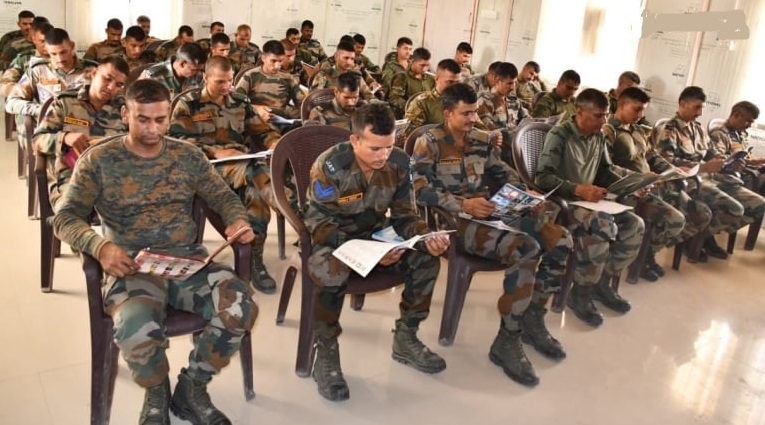 Agneepath Scheme replaced with Sainik Samman Scheme 2024, Defence Minister Rajnath Singh Relaunched Agniveer Scheme
Agneepath Scheme replaced with Sainik Samman Scheme 2024, Defence Minister Rajnath Singh Relaunched Agniveer Scheme
-
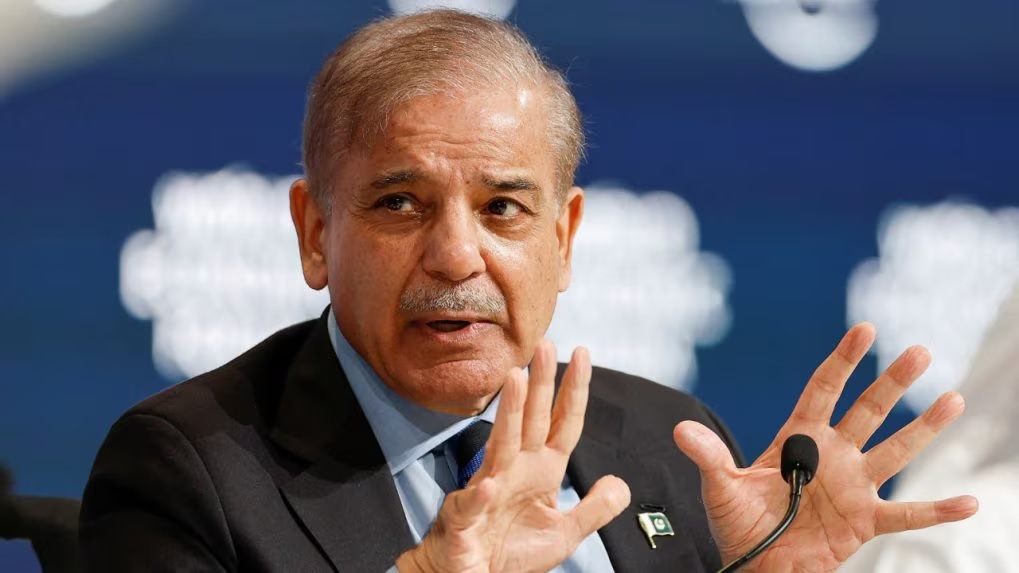 Pakistan Announces 15% Increase in Defence Budget for 2024-25 Amid Economic Crisis
Pakistan Announces 15% Increase in Defence Budget for 2024-25 Amid Economic Crisis
-
 China's Latest DF-31AG ICBM Test: A Strategic Leap in Global Missile Capabilities
China's Latest DF-31AG ICBM Test: A Strategic Leap in Global Missile Capabilities
-
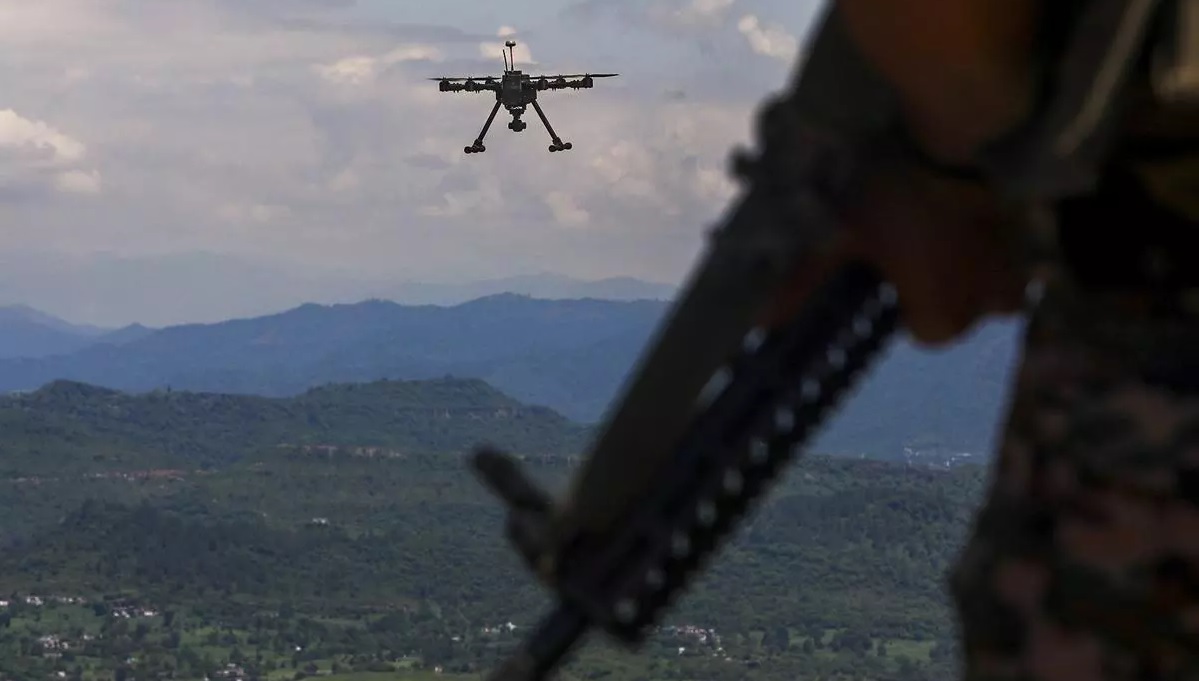 India's Defence Ministry Warns Against Chinese Parts in Military Drones Amid Security Concerns
India's Defence Ministry Warns Against Chinese Parts in Military Drones Amid Security Concerns
-
 China’s Super Radar Detects Mysterious Plasma Bubble Over Giza Pyramids
China’s Super Radar Detects Mysterious Plasma Bubble Over Giza Pyramids
-
 India's Indigenous Kaveri Engine Program with New Focus on Thrust and Performance
India's Indigenous Kaveri Engine Program with New Focus on Thrust and Performance
-
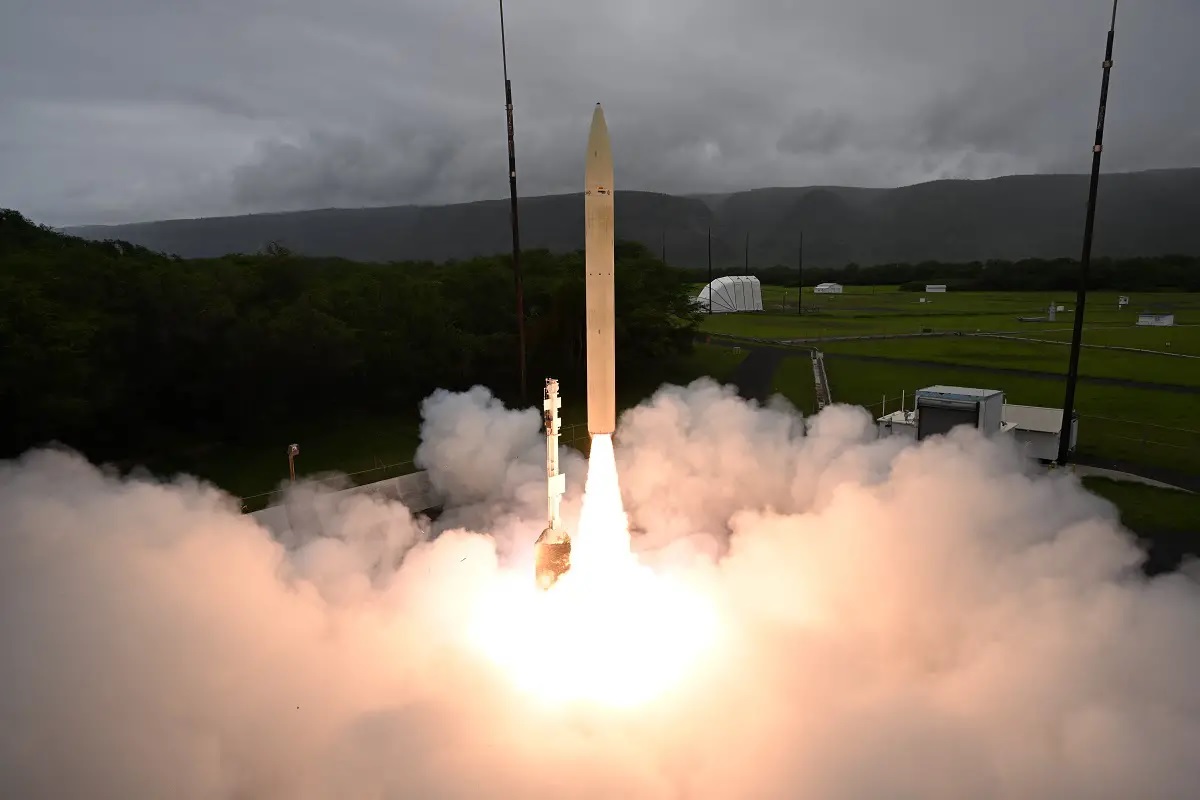 Successful Hypersonic Missile Test by U.S. Department of Defense
Successful Hypersonic Missile Test by U.S. Department of Defense
-
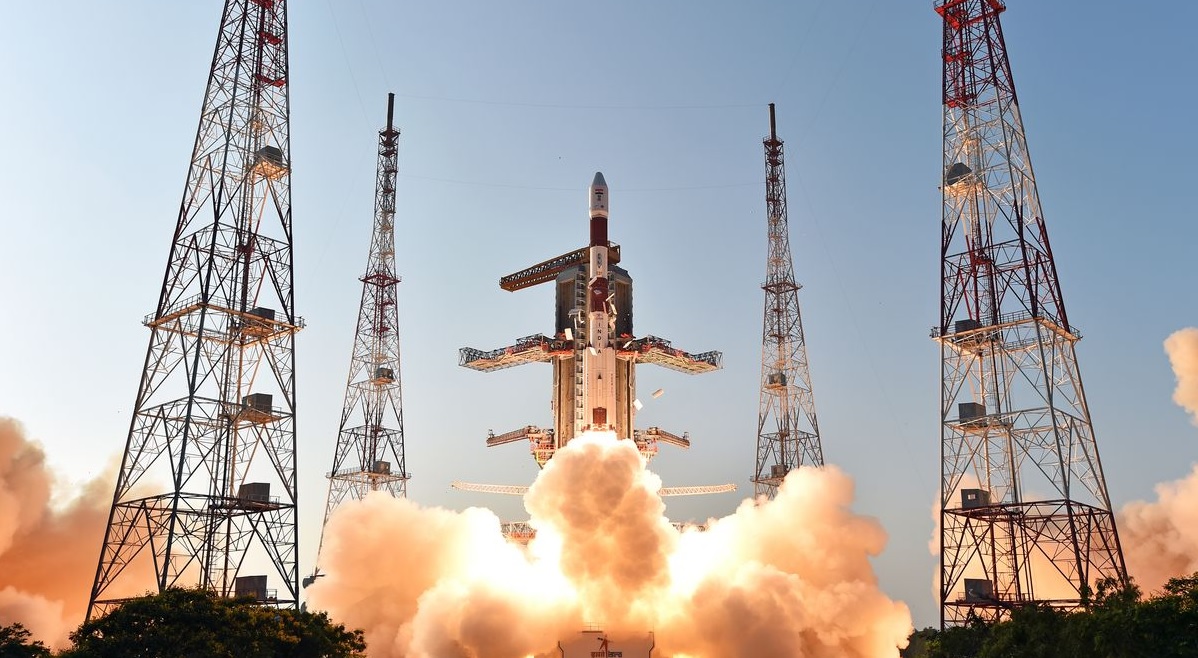 Isro Draws up Ambitious Plan for 2024, says will Launch at Least 12 Missions
Isro Draws up Ambitious Plan for 2024, says will Launch at Least 12 Missions
Top Trending in 4 Days
-
 Russian Scientists Develops Cancer Vaccine, will Distribute Free from 2025 in Russia
Russian Scientists Develops Cancer Vaccine, will Distribute Free from 2025 in Russia
-
 Russia’s ‘Kalinka’ System Threatens Starlink: A Major Setback for Ukraine and Elon Musk’s SpaceX
Russia’s ‘Kalinka’ System Threatens Starlink: A Major Setback for Ukraine and Elon Musk’s SpaceX
-
 Zuchongzhi 3.0 vs. Google’s Willow: Chinese Quantum Computer Matches U.S. Rival in the Race for Superiority
Zuchongzhi 3.0 vs. Google’s Willow: Chinese Quantum Computer Matches U.S. Rival in the Race for Superiority
-
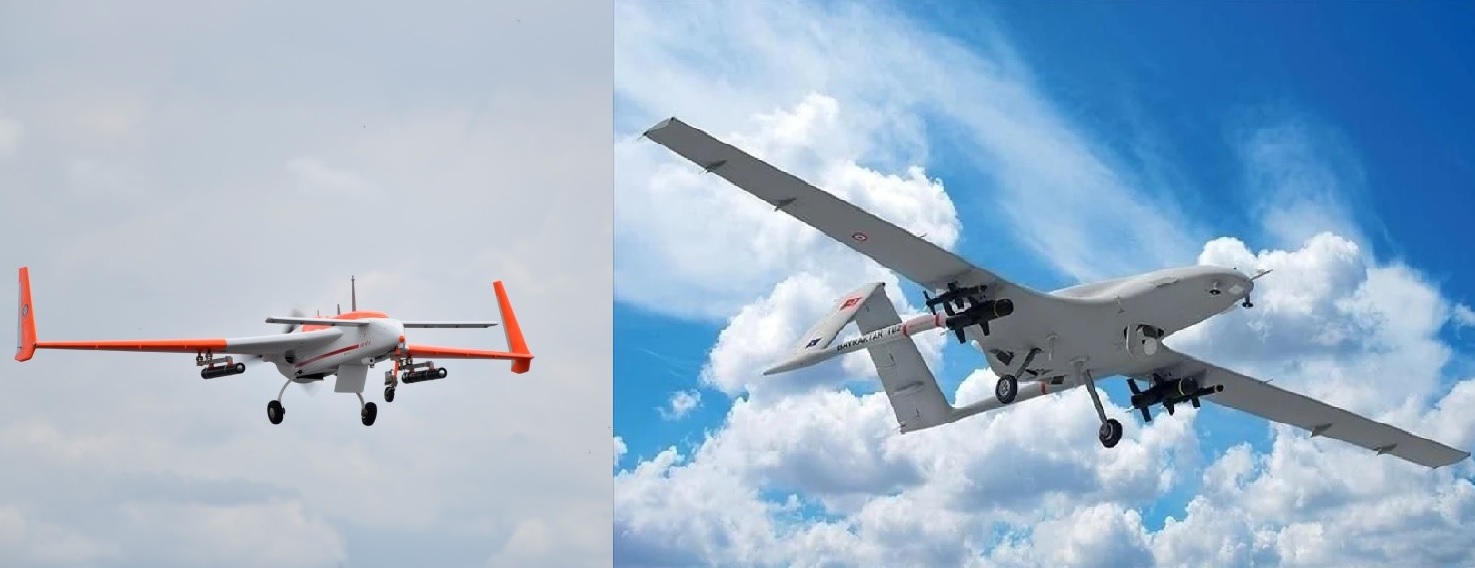 SRUAV-Weaponised vs Bayraktar TB2: A Detailed Comparison of India’s and Turkey’s Armed Drones
SRUAV-Weaponised vs Bayraktar TB2: A Detailed Comparison of India’s and Turkey’s Armed Drones
-
 Russian General Igor Kirillov Killed in Moscow Bombing
Russian General Igor Kirillov Killed in Moscow Bombing
-
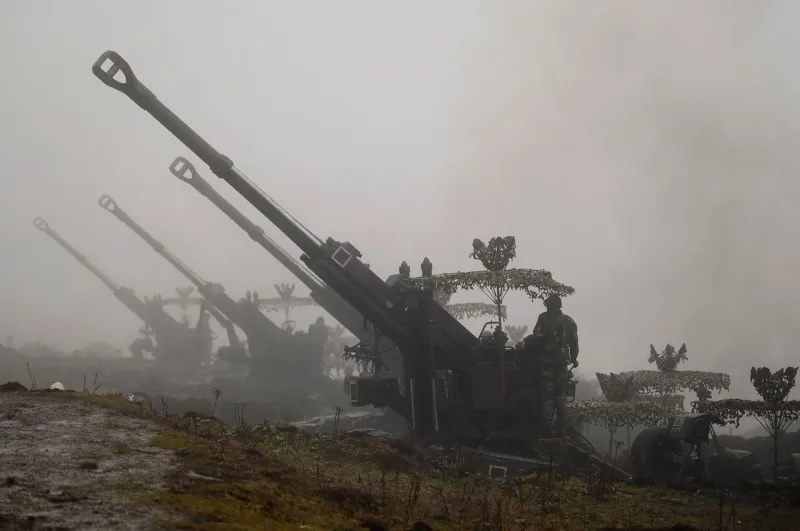 Pentagon Report: China Stations 120,000 Troops, Tanks, and Missiles Near Indian Border
Pentagon Report: China Stations 120,000 Troops, Tanks, and Missiles Near Indian Border
-
 Myanmar Rebel Group Recaptures Historical HQ After 30 Years, Reigniting Long-Standing Struggle
Myanmar Rebel Group Recaptures Historical HQ After 30 Years, Reigniting Long-Standing Struggle
-
 DRDO Launches ‘Dare to Dream 5.0’ to Revolutionize Helicopter Pilot Ejection Systems
DRDO Launches ‘Dare to Dream 5.0’ to Revolutionize Helicopter Pilot Ejection Systems

